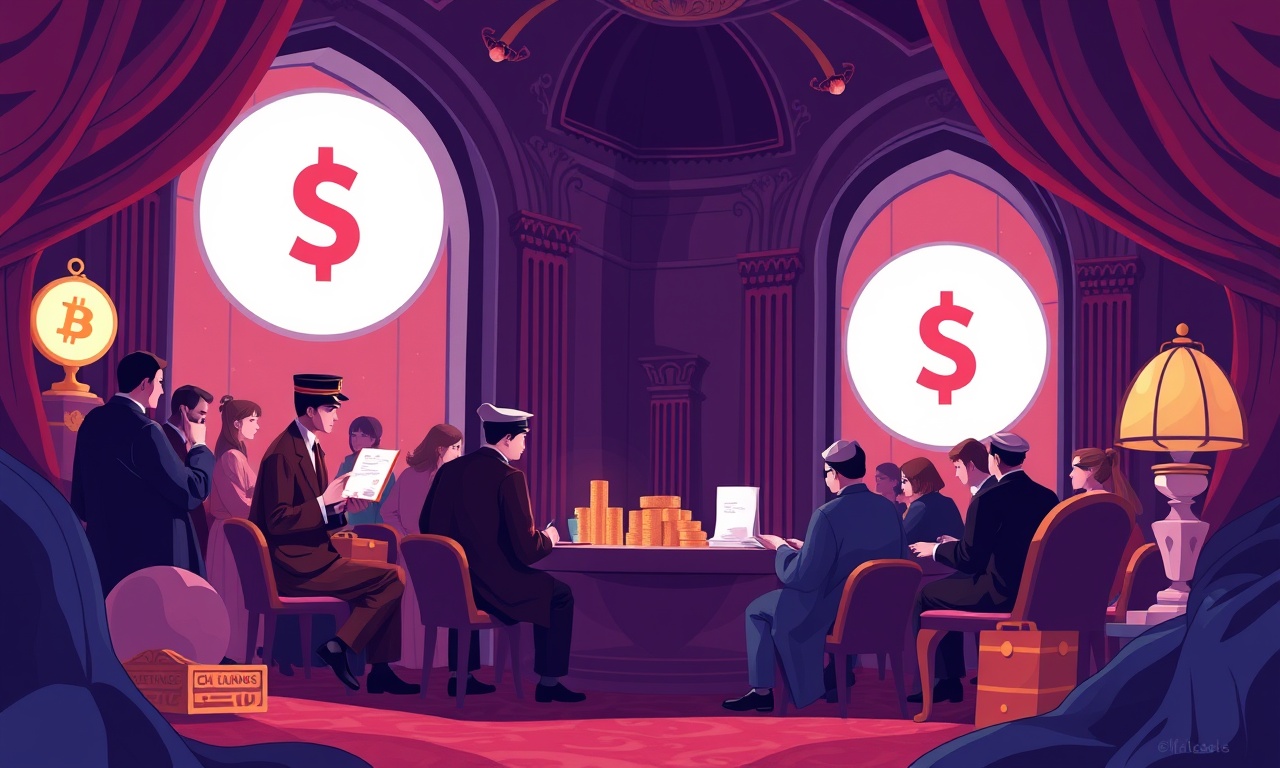Understanding ve Models and Bribe Terminology in DeFi

Introduction
Decentralized finance (DeFi) has evolved beyond simple lending and swapping to a complex ecosystem where token holders influence protocol decisions. Two concepts that have become central to this governance landscape are voting escrow (ve) models and bribes. Understanding how ve tokens lock up funds to secure voting power and how bribes incentivise certain actions helps participants navigate the incentives that drive protocol evolution. This article provides an in‑depth look at ve models, explains the mechanics of bribes, and shows how they interact to shape the behavior of DeFi ecosystems.
Voting Escrow (ve) Models
What is a Voting Escrow?
A voting escrow is a smart‑contract mechanism that lets users lock their tokens for a set period in exchange for a special “ve” token. The longer the lock, the higher the ve token’s weight. This weight often translates to governance influence, rewards, or fee discounts. The key idea is that the commitment of capital over time should reduce the likelihood of short‑term manipulation and align incentives with the protocol’s long‑term health.
How Locking Works
When a user deposits a token into the escrow contract, the contract records the amount and the chosen lock duration. The user receives a ve token that is proportional to both the locked amount and the lock time. For example, if the protocol uses a linear scaling factor, a 12‑month lock may give twice the ve weight of a 6‑month lock for the same amount.
After the lock expires, the user can withdraw the original tokens. Until then, the tokens are locked and cannot be moved or spent. This restriction creates a scarcity that gives the holder leverage in governance voting and, sometimes, in receiving protocol fees.
Inflation and Supply Dynamics
Because ve tokens represent a claim on a locked pool, the total ve supply is dynamic. When users lock more tokens, ve supply increases; when they unlock, it decreases. Protocols often design a multiplier that ties the ve supply to a governance budget or a pool of rewards. As a result, the more capital locked, the larger the incentive pool that can be distributed to participants who vote for certain proposals.
Examples of Ve‑Based Protocols
Curve Finance
Curve introduced the veCRV model, allowing CRV holders to lock their CRV for up to 4 years. The longer the lock, the higher the voting power and the share of CRV emissions received. Curve’s governance is largely driven by veCRV holders, and the protocol’s fee structure rewards them as well.
Convex Finance
Convex aggregates Curve’s liquidity and adds an extra layer of rewards. Users can lock CRV in Convex’s veCRV contract to earn voting power in both Curve and Convex. Convex further offers incentives for staking veCRV in its pool, creating a cascading reward structure that deepens the lock‑in effect.
Why Locking Matters
Locking capital for governance offers several benefits:
- Stability – Long‑term holders are less likely to vote against proposals that could hurt future value.
- Reduced Volatility – Locked tokens are removed from circulation, which can dampen price swings.
- Incentivized Participation – Locking unlocks extra rewards that align users’ interests with the protocol’s success.
Bribes in DeFi Governance
Definition of a Bribe
In DeFi governance, a bribe is an incentive offered to a voter (or a group of voters) to cast a specific vote or perform a particular action that benefits the briber. Unlike traditional bribery, which is illegal, DeFi bribes are legal and transparent because all transactions are recorded on the blockchain and can be audited.
How Bribes Work
A briber—often a liquidity provider or a protocol developer—creates a smart‑contract that offers a reward to anyone who votes a certain way. The reward can be:
- Token rewards (e.g., additional governance tokens)
- Liquidity pool rewards (e.g., boosted fee shares)
- Fee or transaction‑based payouts (e.g., a portion of trading fees)
The bribe contract typically locks the reward tokens until the voting period ends. If a voter participates in the targeted vote and the proposal passes, the bribe is distributed; if the proposal fails, the bribe usually gets returned or burned.
Types of Bribes
Token Bribes
The simplest form, where a voter receives a fixed amount of governance or utility tokens in exchange for a vote. Token bribes can be offered in any denomination, but often use a token that is already part of the protocol’s reward system.
Liquidity Bribes
These bribes provide a share of a protocol’s liquidity pool rewards. For instance, a voter might receive a portion of the yearly fee income of a pool if they support a proposal that adds liquidity to that pool.
Fee Bribes
In fee‑bribes, the briber offers a slice of transaction or liquidity provider fees. A protocol might offer a 0.1 % fee to a certain voting pool as a bribe for approving a fee increase.
Bribe Protocols
Several dedicated protocols exist to streamline the creation, deployment, and monitoring of bribes:
- Convex Bribes – Convex Finance allows users to create bribe contracts that reward veCRV holders for voting on Curve proposals.
- Beefy Finance Bribes – Beefy’s ecosystem includes a bribe system for veBNB holders to vote on governance proposals for Beefy vaults.
- Yearn Governance Bribes – Yearn has an on‑chain bribe system for veYFI holders to influence protocol upgrades.
These protocols standardize the bribe contract structure, making it easier for users to participate and for developers to integrate bribe mechanisms into their projects.
Interaction Between ve Models and Bribes
Bribes and ve models reinforce each other. The longer a user locks, the more ve tokens they hold, and the greater the voting power they can exert. Bribes, in turn, reward those who use that voting power for specific outcomes. This creates a virtuous cycle:
- Lock Tokens → Acquire ve tokens → Gain voting power.
- Vote for Bribes → Receive rewards → Potentially increase overall returns.
- Repeat → Expand influence and earnings.
However, the system can also become complex. When multiple bribes compete for the same pool of voters, a user may have to balance potential rewards against the risk of influencing the protocol in a direction that might hurt future returns.
Practical Guidance for Participants
Choosing a Locking Strategy
- Short‑Term vs. Long‑Term – A 1‑year lock gives fewer votes but frees capital sooner, whereas a 4‑year lock offers maximum weight and a larger share of rewards.
- Risk Tolerance – If you anticipate high volatility, a shorter lock might reduce exposure to token price swings.
- Rebalancing – Some protocols allow you to extend or reset locks; consider whether you want to keep your position locked indefinitely or adjust based on market conditions.
Identifying and Evaluating Bribes
- Transparency – Verify the bribe contract’s source code and audit reports.
- Reward Structure – Understand whether rewards are one‑time, recurring, or tied to ongoing performance metrics.
- Voting Requirements – Some bribes require a minimum number of votes or a specific weight; ensure you meet those thresholds.
- Risk of Loss – If the proposal fails, you may forfeit the bribe or be left with locked tokens that can’t be used elsewhere.
Managing Your Voting Power
- Prioritize High‑Impact Proposals – Focus on votes that affect fee structures, liquidity incentives, or core protocol upgrades.
- Diversify – Avoid putting all your ve tokens behind a single bribe; consider spreading your influence across multiple proposals.
- Community Sentiment – Stay informed about the community’s stance; a bribe that aligns with the broader user base may increase the likelihood of proposal success.
Risk Considerations
- Slippage – Locking large amounts can impact token prices; be mindful of the market impact of your actions.
- Front‑Running – Some bribe contracts are vulnerable to front‑running attacks where an attacker can pre‑empt your vote to capture the reward.
- Regulatory Scrutiny – While bribes are legal, regulators may view large incentive mechanisms skeptically, especially if they resemble traditional financial incentives.
Best Practices
- Use Reliable Data Sources – Rely on on‑chain analytics platforms that track voting power, bribe amounts, and proposal outcomes.
- Keep an Audit Trail – Maintain records of your votes and bribe interactions; this helps in resolving disputes or assessing performance over time.
- Participate in Governance Discussions – Engage with community forums, Discord channels, and Twitter threads to gauge consensus and gather insights.
Future Outlook
Potential Improvements in Ve Models
- Dynamic Locking Periods – Protocols may introduce flexible lock lengths that adjust based on network conditions.
- Enhanced Reward Mechanics – Future ve systems could allocate rewards in a more granular way, tying them to specific actions beyond voting.
- Cross‑Protocol Voting Power – Standardization of ve tokens across different protocols could allow a single token lock to grant influence in multiple ecosystems.
Evolution of Bribe Mechanisms
- Hybrid Bribes – Combining token, fee, and liquidity rewards to create multi‑layered incentive structures.
- On‑Chain Reputation Scores – Introducing reputation systems that weigh the trustworthiness of voters before awarding bribes.
- Transparent Bribe Audits – Third‑party auditors could certify bribe contracts to enhance trust and reduce the risk of malicious designs.
Regulatory Impact
As DeFi matures, regulators may begin to scrutinize incentive mechanisms more closely. Protocols that adopt transparent and audited bribe systems may be better positioned to comply with evolving regulations. Conversely, opaque or exploit‑prone bribe contracts could face legal challenges, driving a shift toward standardization and best‑practice enforcement.
Conclusion
Ve models and bribes together form a sophisticated incentive engine that shapes the governance landscape of DeFi. By locking tokens into a voting escrow, participants secure long‑term influence and potential rewards. Bribes, meanwhile, provide immediate, tangible incentives to align individual actions with protocol goals. Understanding both concepts allows users to make informed decisions, balance risk and reward, and contribute meaningfully to the ecosystem’s evolution.
By staying educated about locking strategies, evaluating bribe opportunities carefully, and adhering to best practices, participants can navigate the dynamic world of DeFi governance with confidence.


.png)
JoshCryptoNomad
CryptoNomad is a pseudonymous researcher traveling across blockchains and protocols. He uncovers the stories behind DeFi innovation, exploring cross-chain ecosystems, emerging DAOs, and the philosophical side of decentralized finance.
Random Posts

Unlocking DeFi Fundamentals Automated Market Makers and Loss Prevention Techniques
Discover how AMMs drive DeFi liquidity and learn smart tactics to guard against losses.
8 months ago

From Primitives to Vaults A Comprehensive Guide to DeFi Tokens
Explore how DeFi tokens transform simple primitives liquidity pools, staking, derivatives into powerful vaults for yield, governance, and collateral. Unpack standards, build complex products from basics.
7 months ago

Mastering Volatility Skew and Smile Dynamics in DeFi Financial Mathematics
Learn how volatility skew and smile shape DeFi options, driving pricing accuracy, risk control, and liquidity incentives. Master these dynamics to optimize trading and protocol design.
7 months ago

Advanced DeFi Lending Modelling Reveals Health Factor Tactics
Explore how advanced DeFi lending models uncover hidden health-factor tactics, showing that keeping collateral healthy is a garden, not a tick-tock, and the key to sustainable borrowing.
4 months ago

Deep Dive into MEV and Protocol Integration in Advanced DeFi Projects
Explore how MEV reshapes DeFi, from arbitrage to liquidation to front running, and why integrating protocols matters to reduce risk and improve efficiency.
8 months ago
Latest Posts

Foundations Of DeFi Core Primitives And Governance Models
Smart contracts are DeFi’s nervous system: deterministic, immutable, transparent. Governance models let protocols evolve autonomously without central authority.
2 days ago

Deep Dive Into L2 Scaling For DeFi And The Cost Of ZK Rollup Proof Generation
Learn how Layer-2, especially ZK rollups, boosts DeFi with faster, cheaper transactions and uncovering the real cost of generating zk proofs.
2 days ago

Modeling Interest Rates in Decentralized Finance
Discover how DeFi protocols set dynamic interest rates using supply-demand curves, optimize yields, and shield against liquidations, essential insights for developers and liquidity providers.
2 days ago
